Zygaena (Zygaena) filipendulae
(Scopoli, 1763)
-
 Subfamily: Zygaeninae
Subfamily: Zygaeninae -
 Wingspan: 30-38 mm
Wingspan: 30-38 mm -
 Flight period: May - Aug
Flight period: May - Aug -
 Spread: Common
Spread: Common -
 Host plants: Fabaceae
Host plants: Fabaceae
Information
The Zygaena filipendulae also called Six-spot Burnet is a moth of the Zygaenidae family with a wingspan of 25-34 mm.
Moth widespread in most of Europe is absent from Portugal. *
Its range extends to Turkey and the Middle East up to Iran. ***
In Italy it is also present in Sicily, but not in Sardinia. *
The front wings of the Zygaena filipendulae have a black-green metallic or black-blue metallic background color, densely scaled
6 red spots are visible although some subspecies have only 5. **
The hind wings are deep red with a black border.
Characterized by a high number of subspecies, some aberrations have spots and the hind wings have a yellow / orange color. **
Species easily confused with the congener Zygaena transalpina which has finer antennae and the position of the 5th and 6th spot of the front wings
clearly separated from Zygaena filipendulae .
The Zygaena filipendulae is found on limestone meadows exposed to the sun, steppe slopes, arid pastures and locally on clearings in luminous woods,
from the basal plane up to 2000 m of altitude.
Univoltina the flickers take place between May and August depending on the latitude, and a second generation is possible in late summer. It overwinters in the larva stage.
Sexual dimorphism is mild and concerns the size, which is greater in the female. The antennae end with a club with "teeth".
These butterflies have a particular flight, they move their wings quickly, but this does not allow them to fly quickly on the contrary, they seem
to be carried by the wind like small autumn leaves.
Like most of the Zigenids, it has aposematic bright colors (i.e. they represent a warning for predators) and takes cyanogenic glycosides
(toxic substances) at all stages of life.
It is one of the particular aspects of Zygaena, the larvae for example feed on Lotus corniculatus which contains these substances.
As mentioned in the description of the family, the moths belonging to the Zygaenidae are the only known insects, capable of carrying out both
biosynthesis that the withdrawal of the cyanogenic glycosides themselves, from the plants they feed on. ****
The transfer of a nuptial gift of cyanogenic glycosides during mating, as well as possible involvement, is also demonstrated
of these substances (in particular hydrogen cyanide) for the attraction of the mate.
The eggs of the newly laid Zygaena filipendulae are white / yellowish, ovoid, shiny, tend to darken and become gray before hatching,
they are laid in groups.**
The larva is yellow or light green in color with a series of spots visible dorsally, it is covered with sparse white and gray hairs. **
The brown chrysalis with the area of the abdominal bands of yellow color, forms inside a compact silky cocoon of elongated shape and
with pale yellow pointed apexes. **
The larvae feed on Fabaceae such as Lotus sp., Coronilla varia, Dorycnium, Onobrychis, Hippocrepis comosa, Oxytropis pilosa, Securigera varia and Trifolium.
* Lepidoptera mundi https://lepidoptera.eu/ - Fauna Europea https://fauna-eu.org/
** Bestimmungshilfe für die in Europa nachgewiesenen Schmetterlingsarten - http://lepiforum.de/
*** Centro di Educazioene Formazione Ambientale Onlus Niscemi - http://www.ceaniscemi.it/
**** Capinera, John L. (2008). Encyclopedia of Entomology. Springer Science & Business Media. ISBN 978-1-4020-6242-1.X


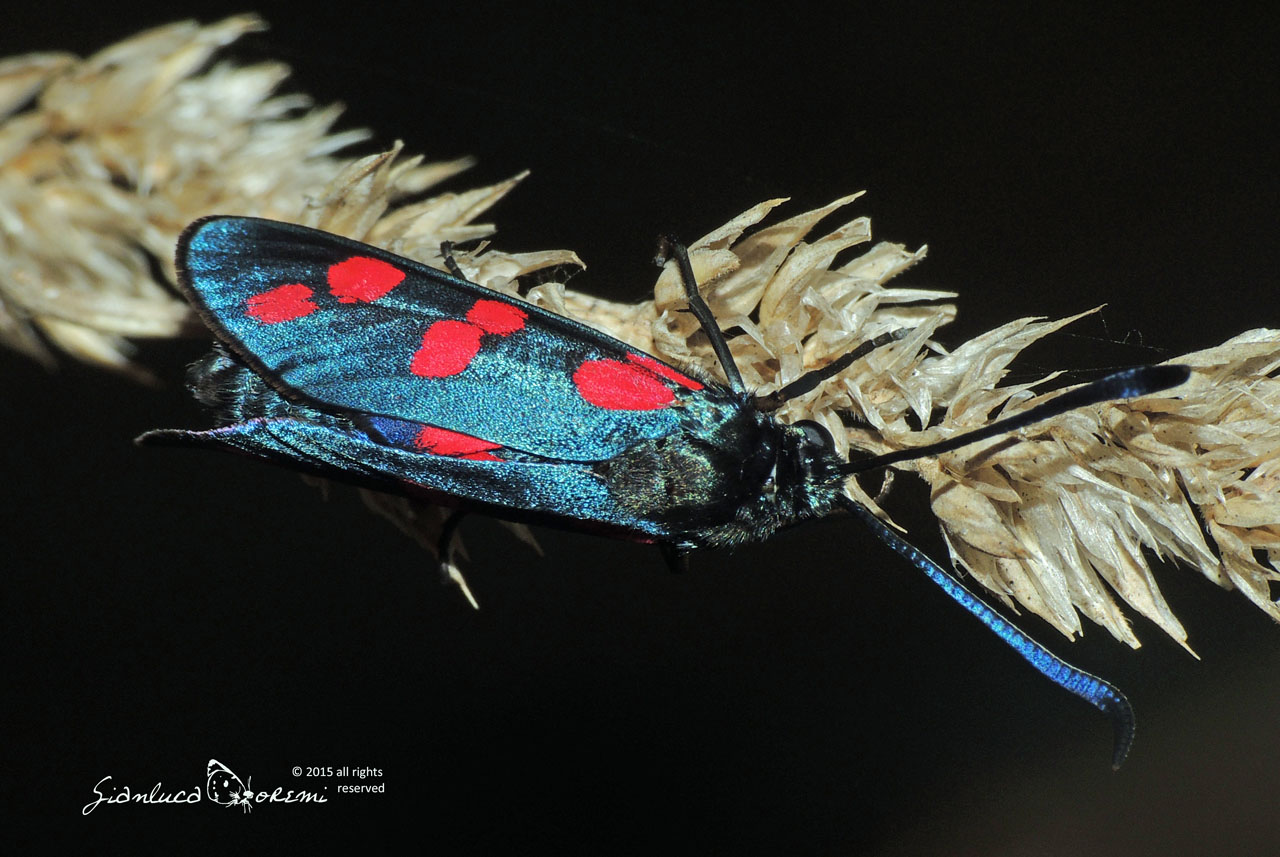
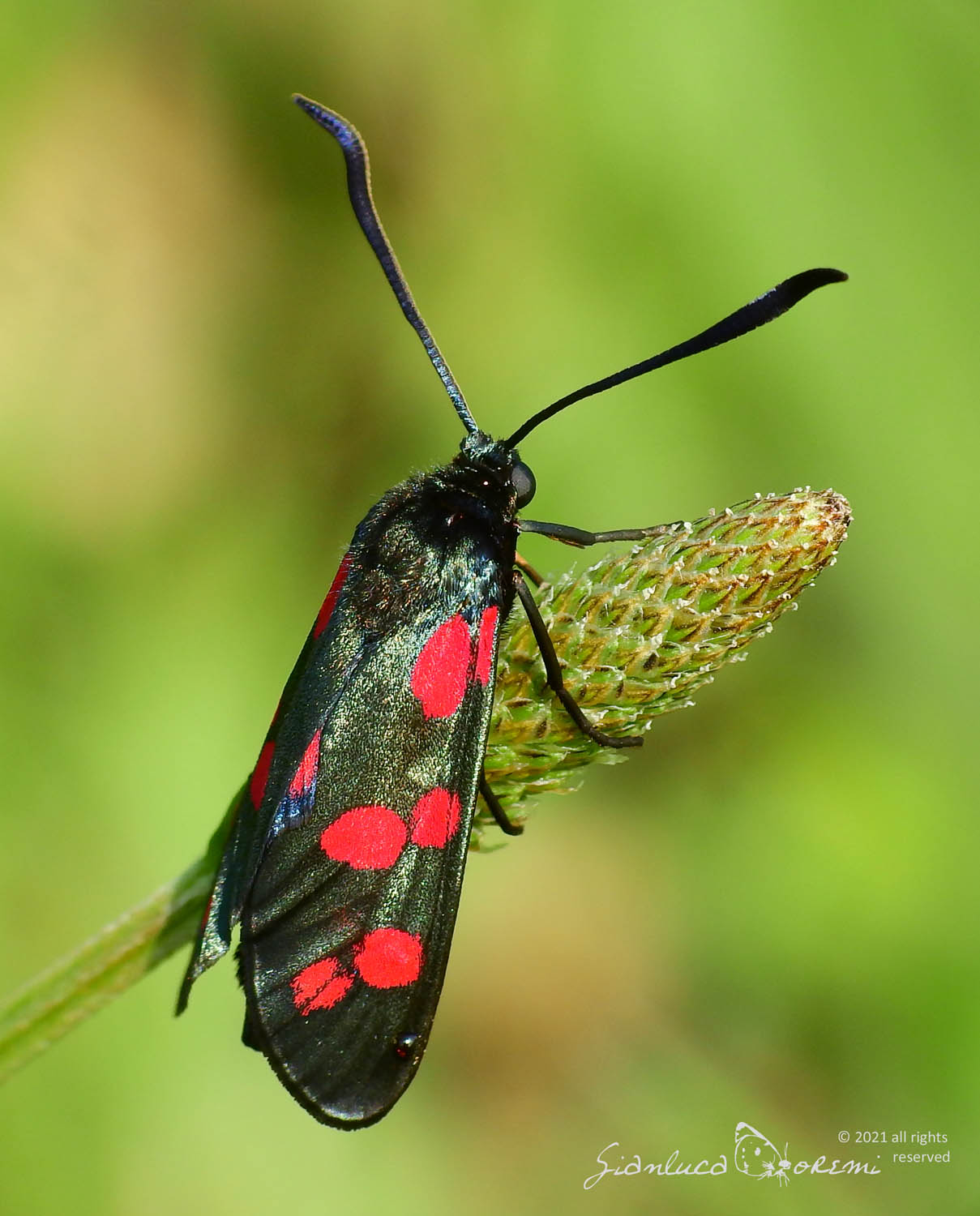

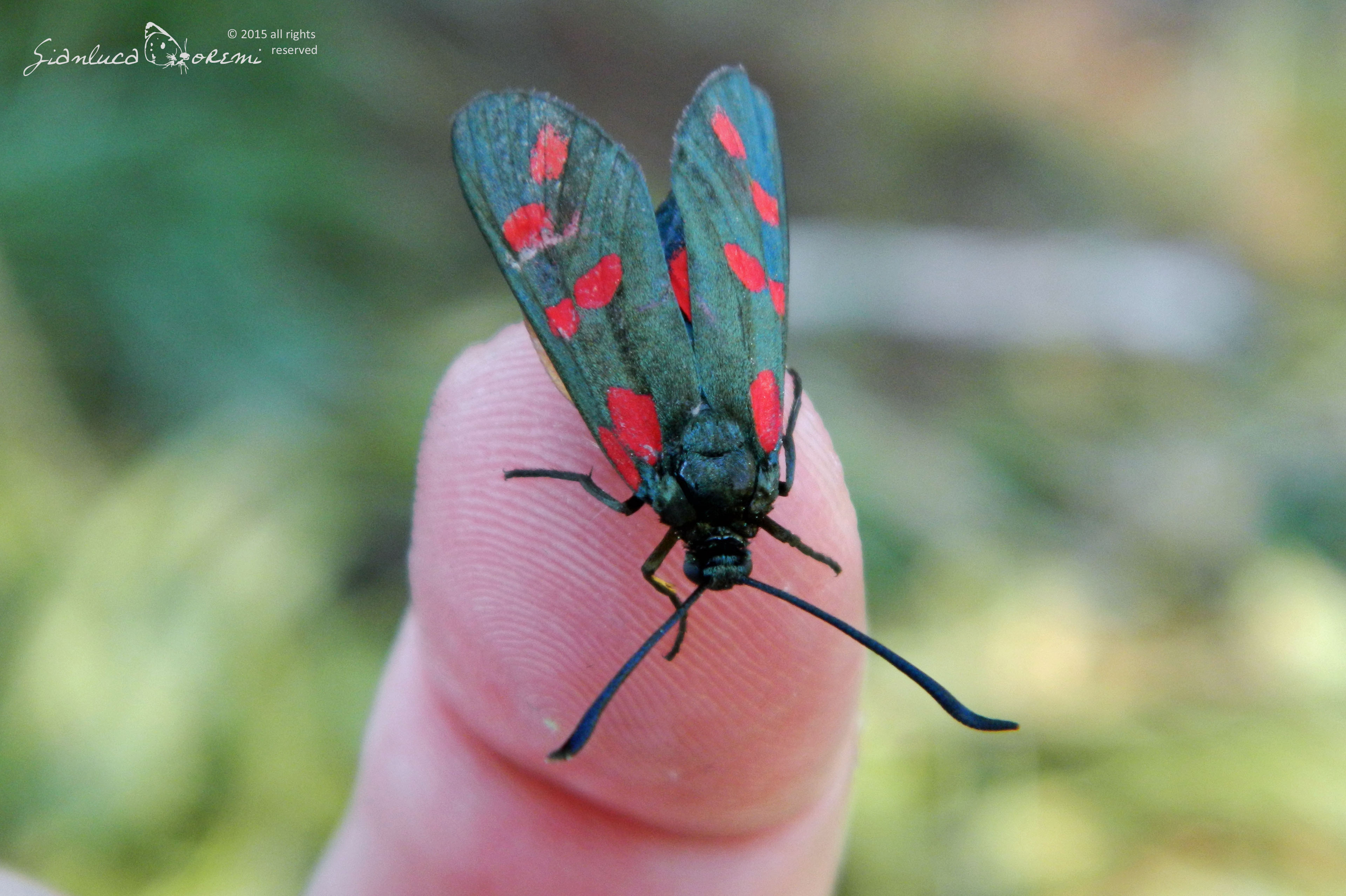
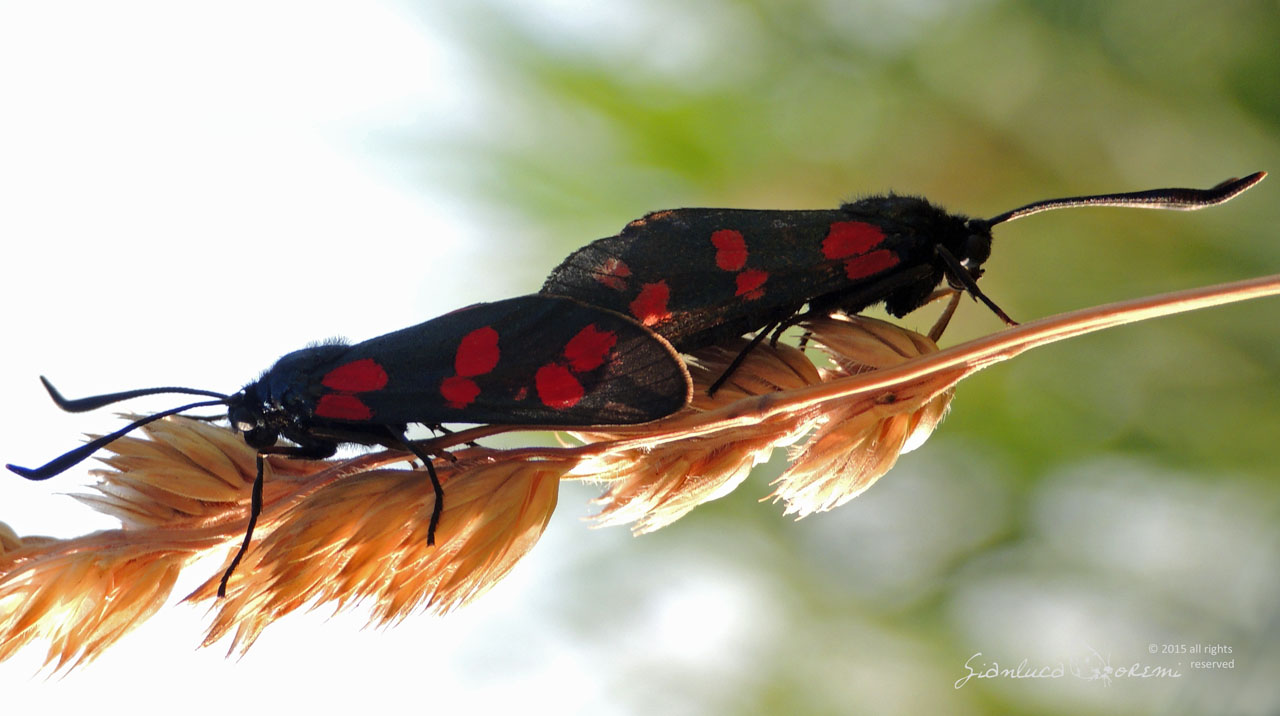
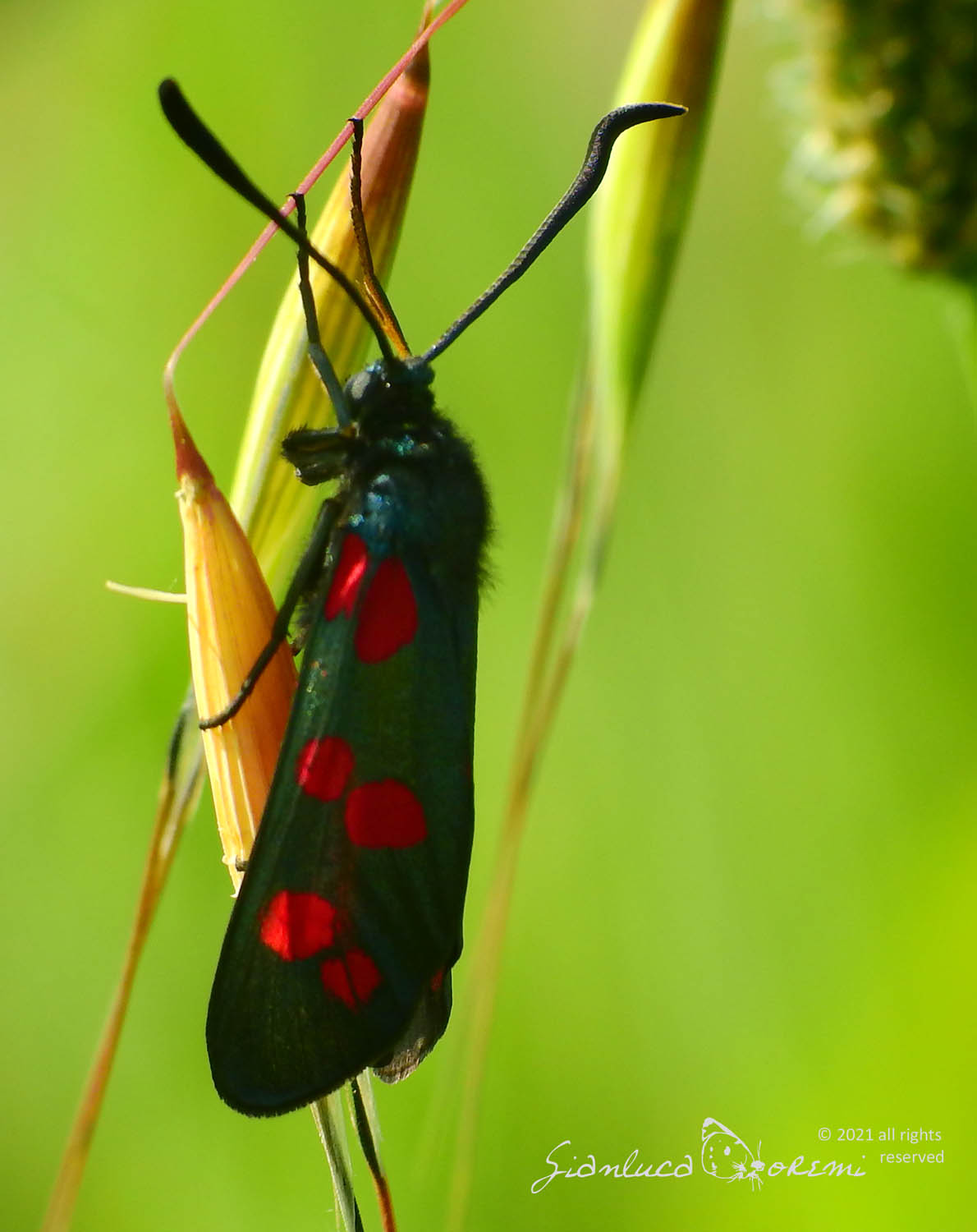
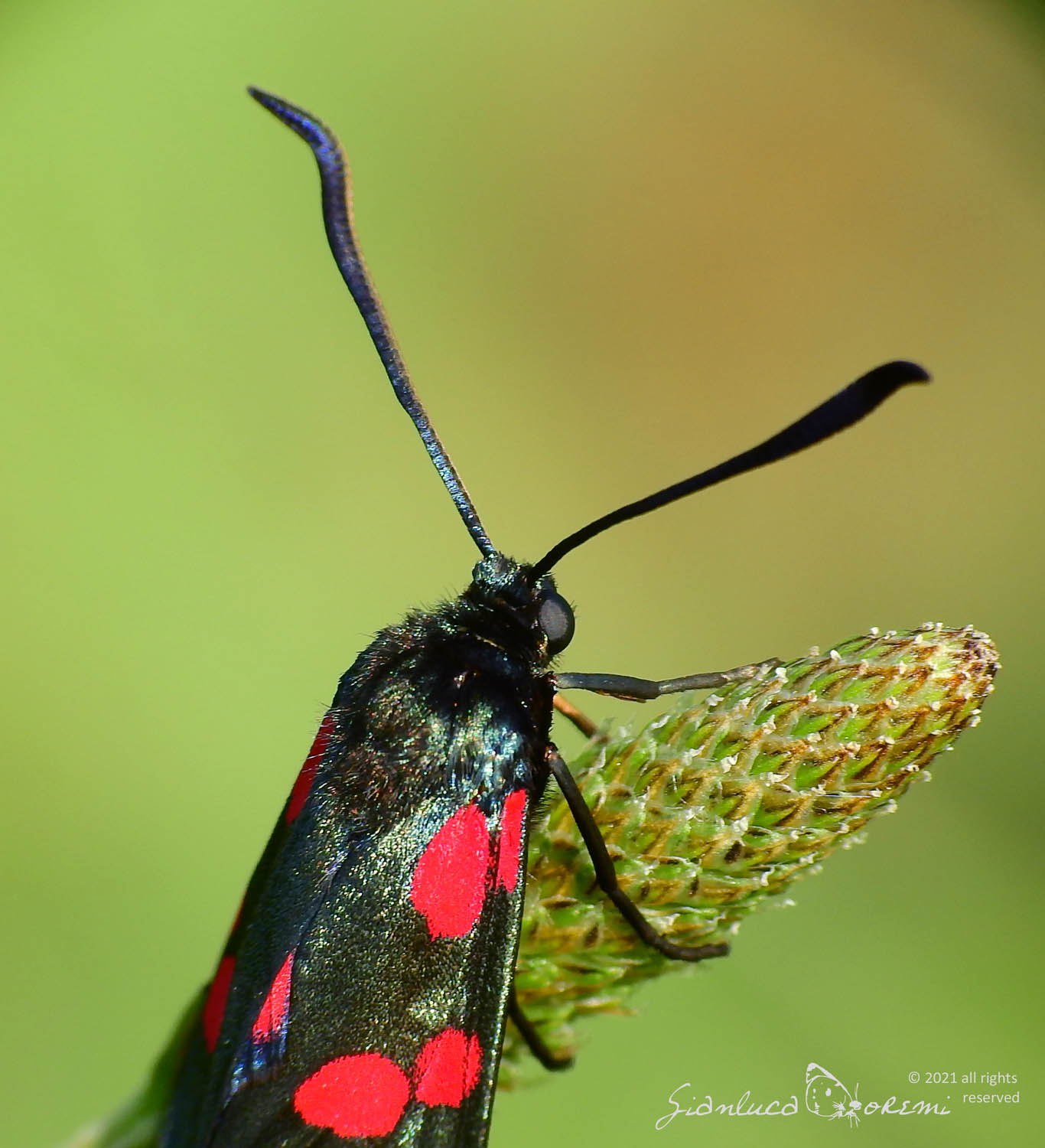
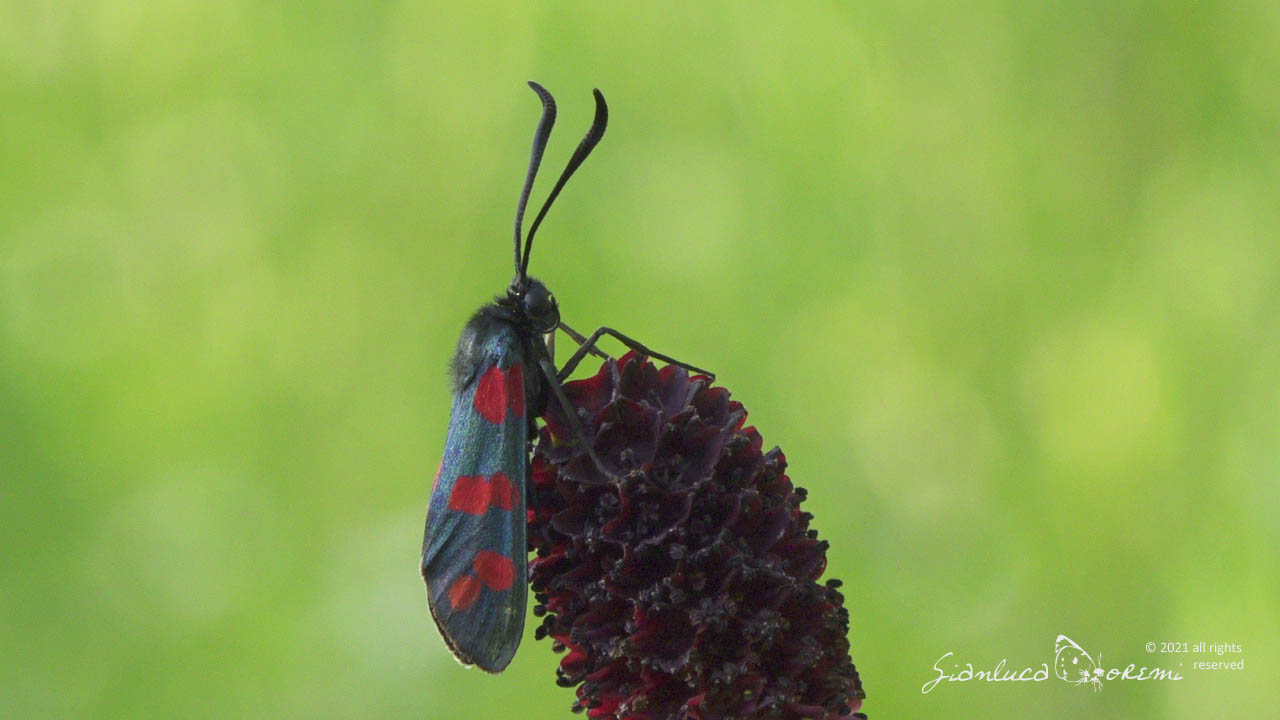

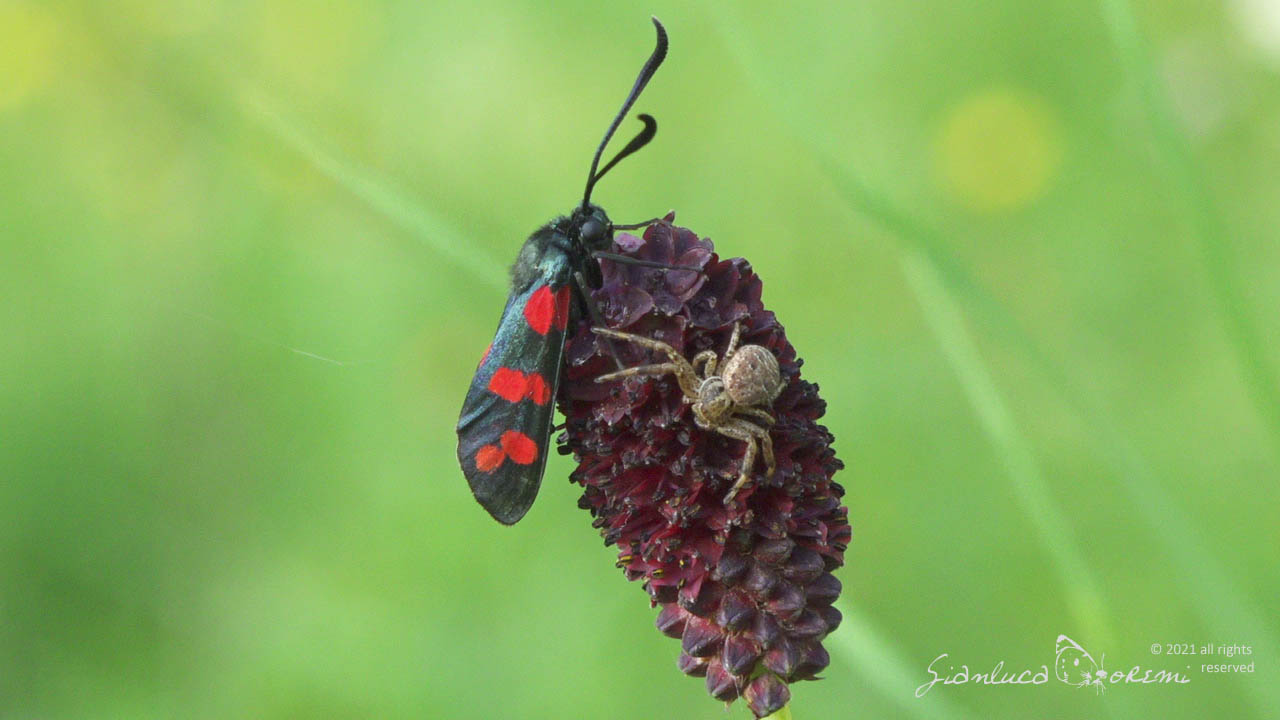
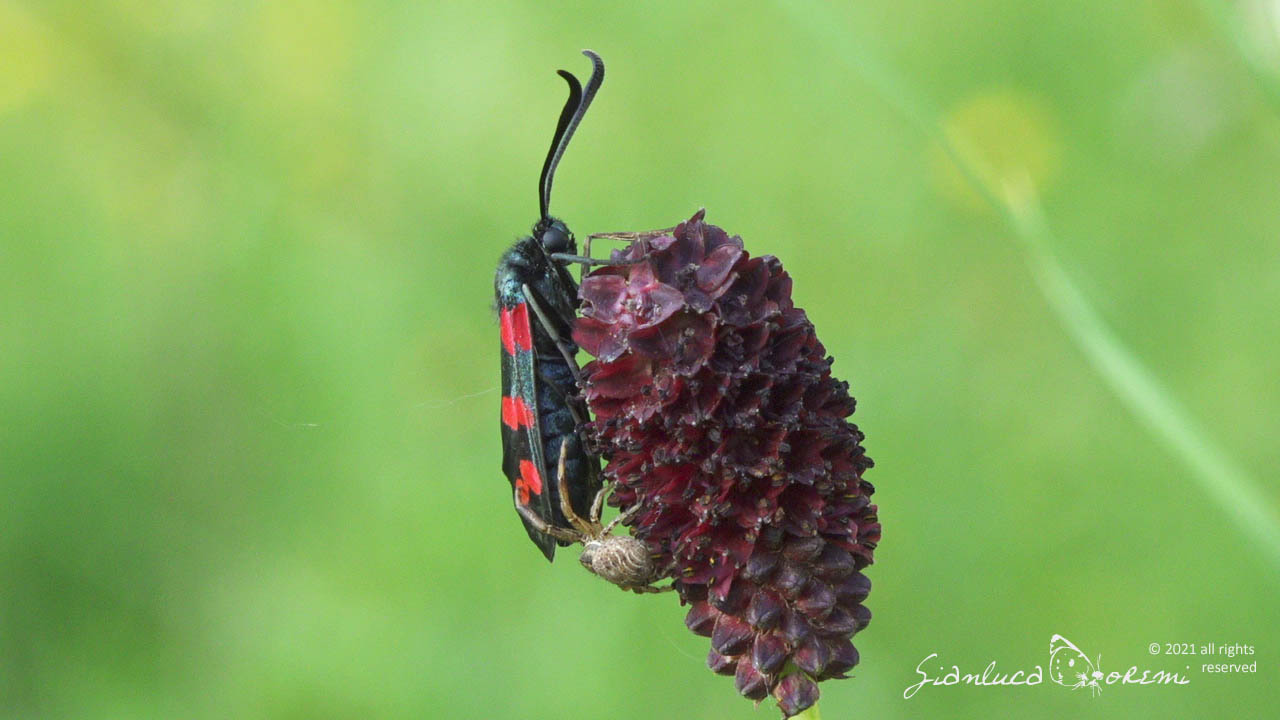



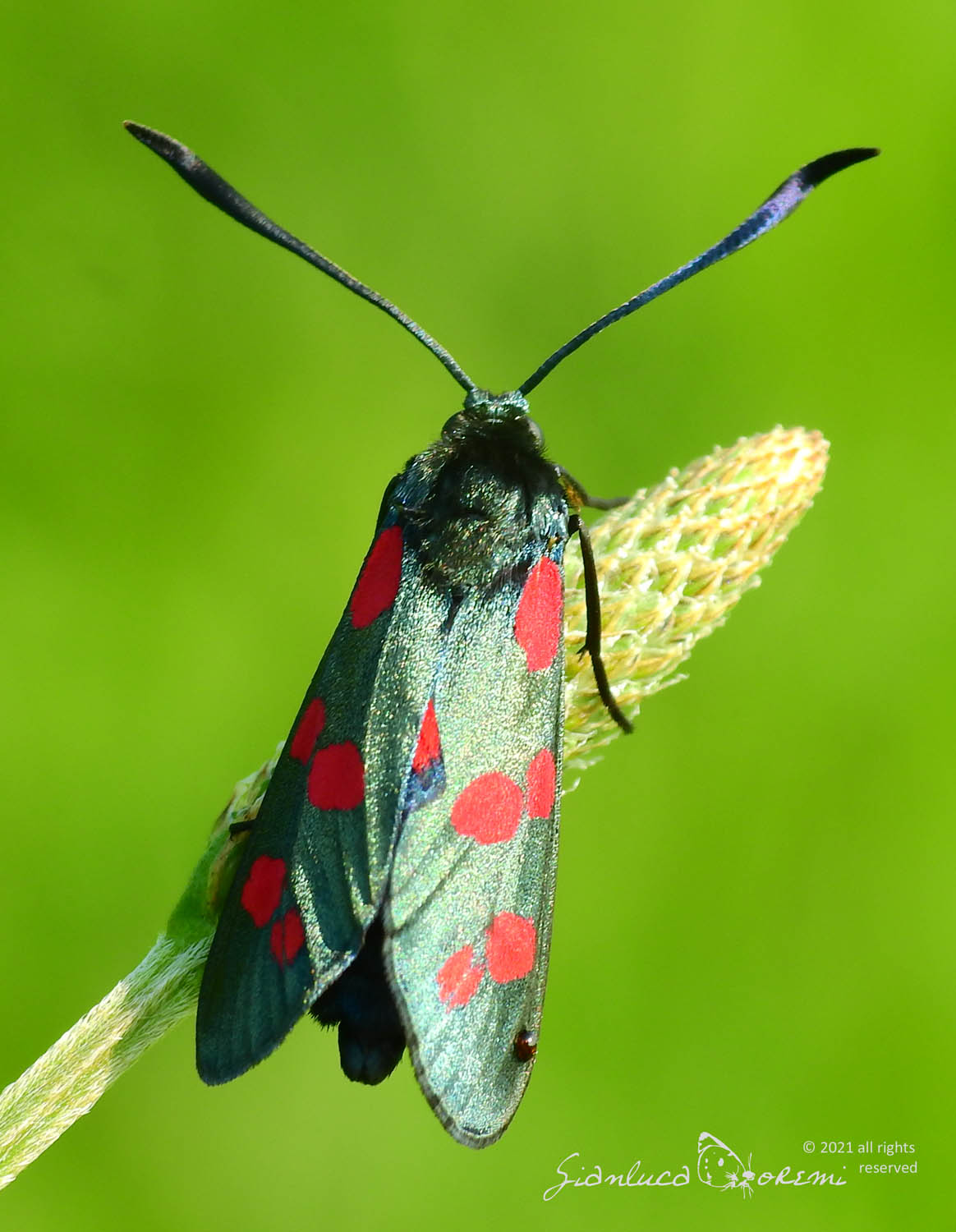
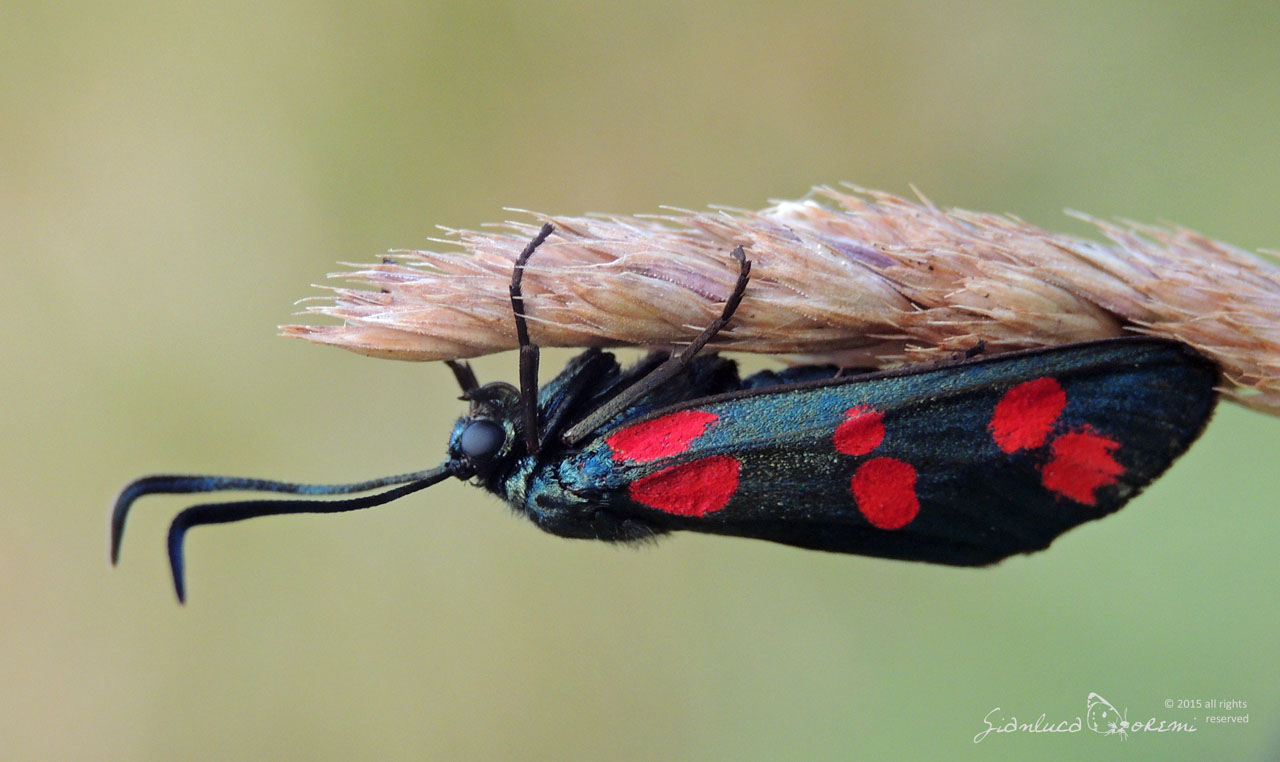
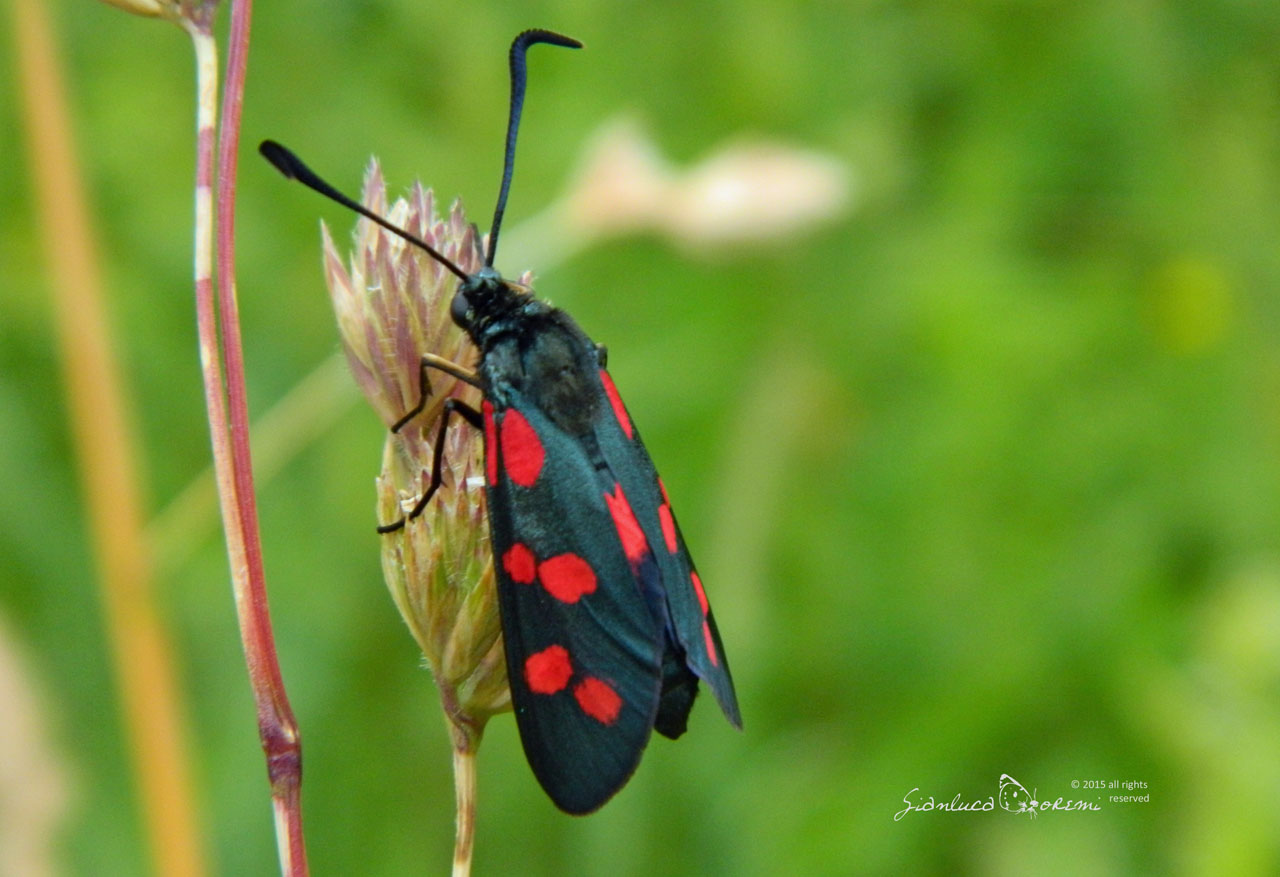
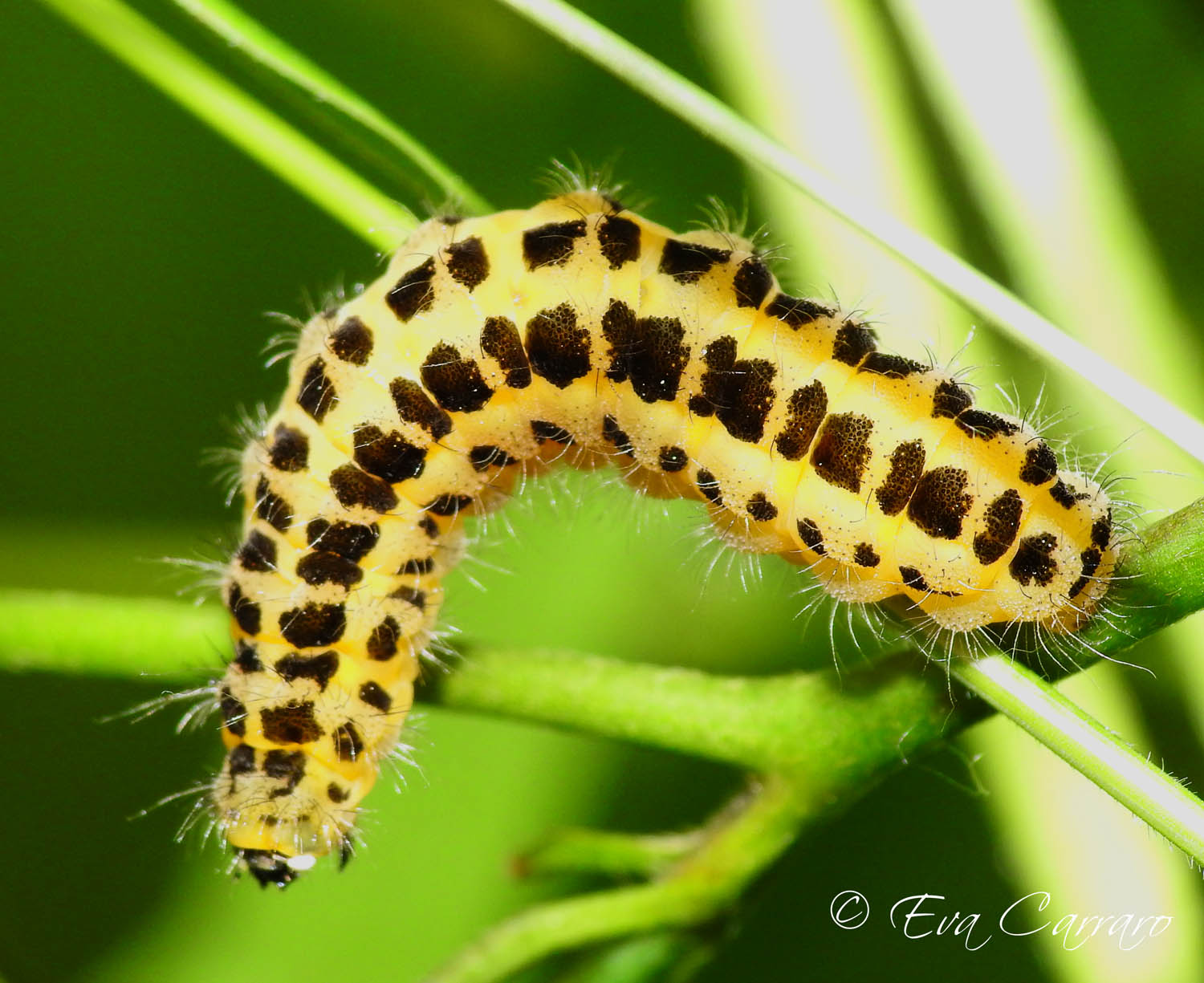

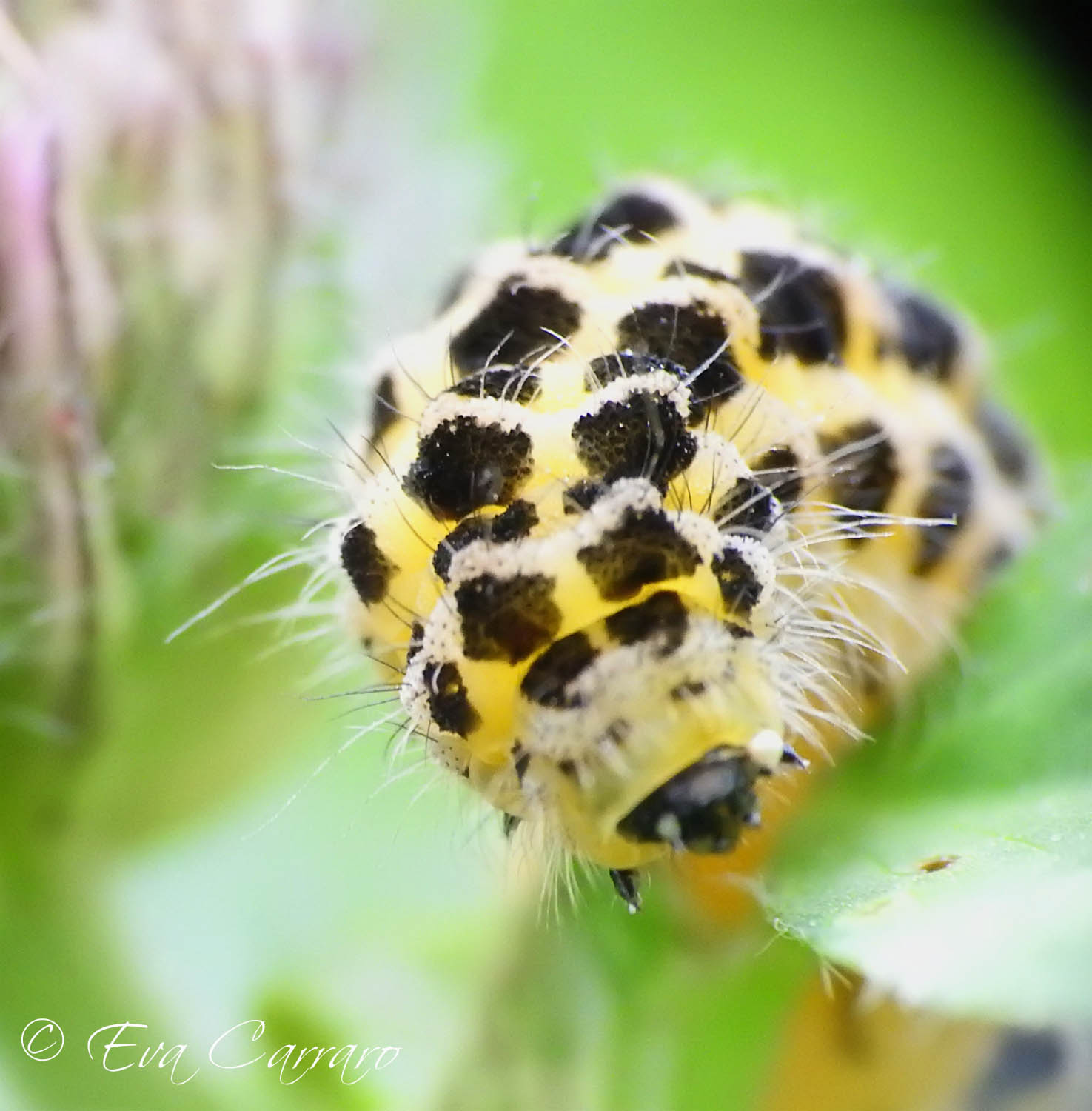

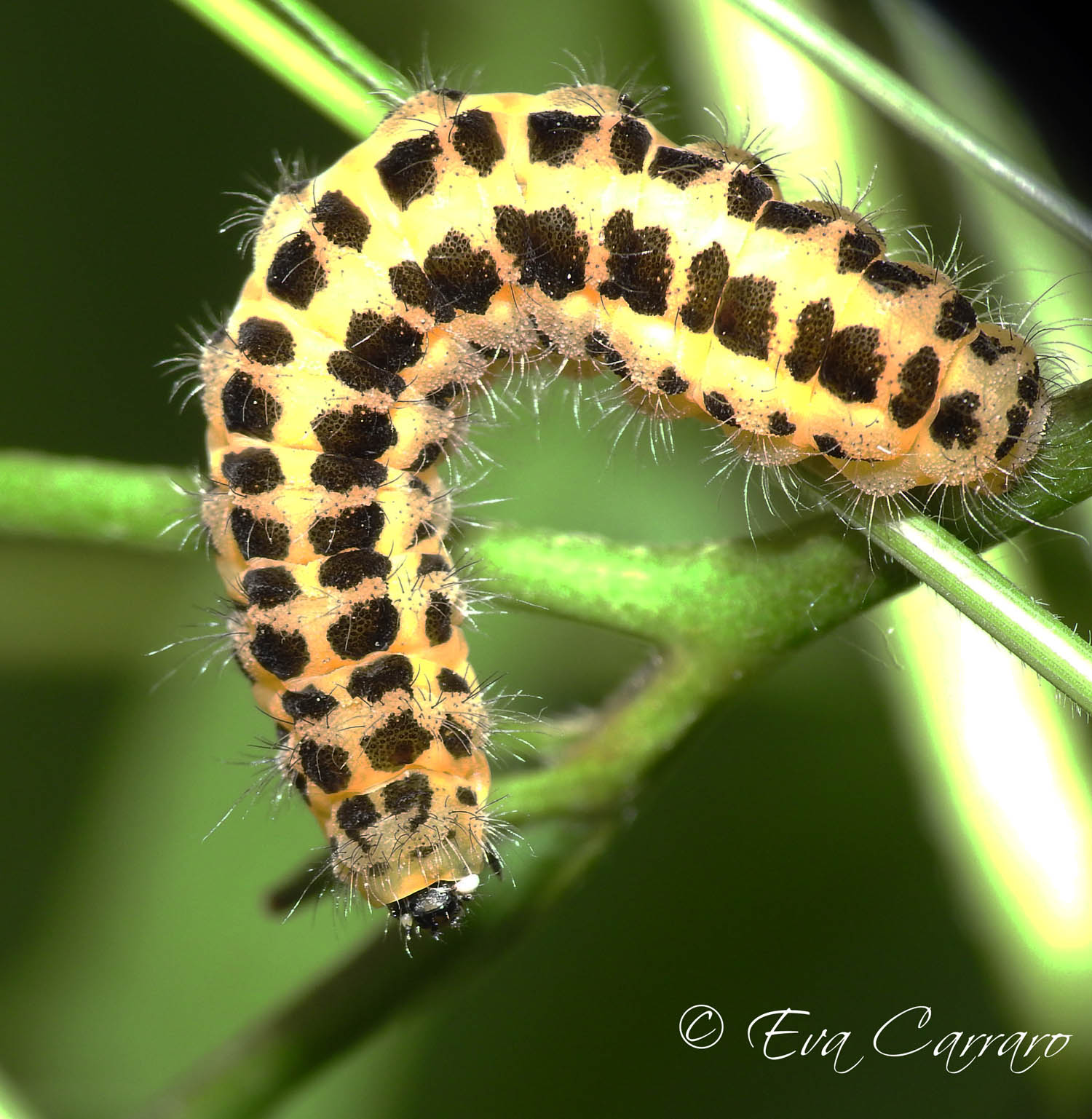
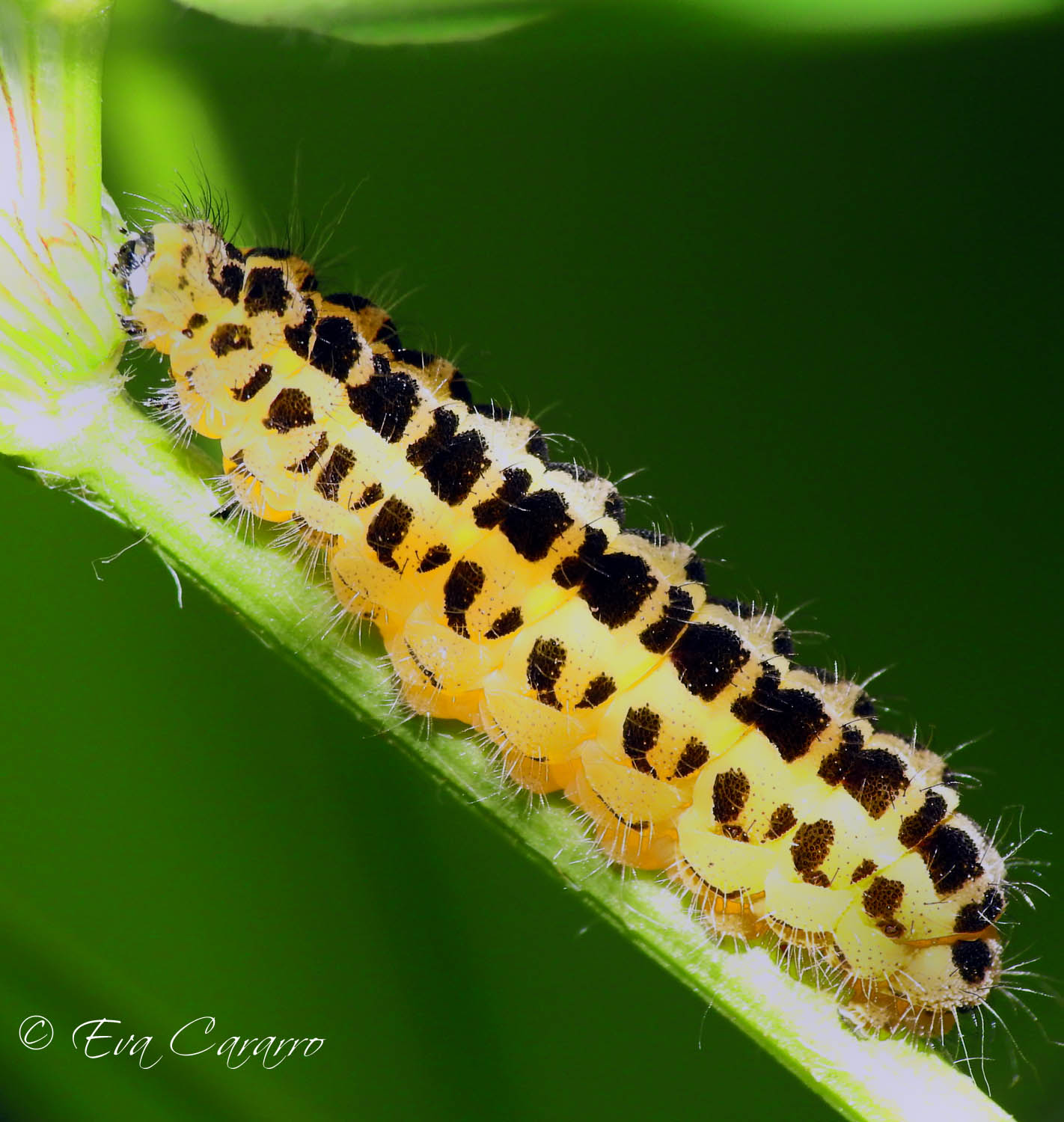

 EN
EN ITA
ITA
Social and publications